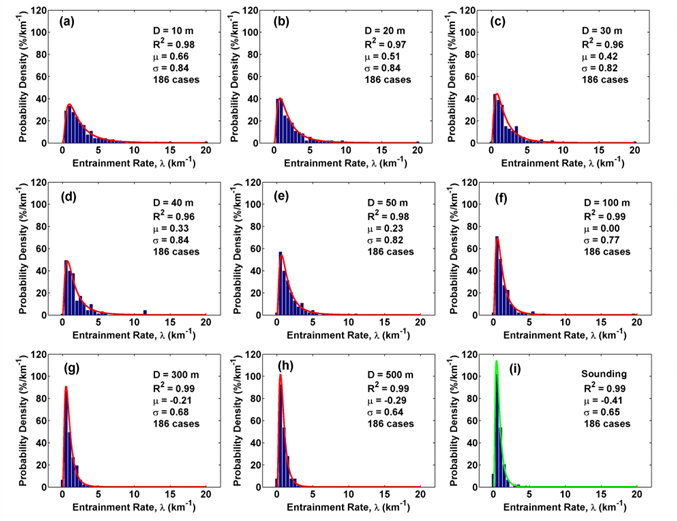Entrainment Rate in Shallow Cumuli: Probabilistic Distribution and Dependence on Dry Air Sources
Submitter
Liu, Yangang — Brookhaven National Laboratory
Lu, Chunsong — Nanjing University of Information Science and Technology
Area of research
Cloud Processes
Journal Reference
Science
The rate at which cloud engulfs dry air (entrainment rate) has proven to be one of the strongest controls on the climate sensitivity of climate models; it is also one of the least understood problems in convection parameterization. Studies on the dependence of entrainment rate on dry air sources and on the probability density function of entrainment range from rare to none. To fill these two gaps, Department of Energy scientists at Brookhaven National Laboratory have applied the approach for estimating entrainment rate recently developed by the same group to the cumulus cloud data collected during the Routine AAF [Atmospheric Radiation Measurement (ARM) Aerial Facility] Clouds with Low Optical Water Depths (CLOWD) Optical Radiative Observations (RACORO) field campaign.
Impact
The results were used to empirically examine, for the first time, the probability density function of entrainment rate and the dependence of entrainment rate on the distance from the edge of the cloud core from which the dry air is entrained.
Summary
It is found that the entrainment rate decreases when the dry air is entrained from an increasing distance from the cloud core edge. Probability density functions of entrainment rate vary with the distance and height above the cloud-base, and all are well-fitted by lognormal distributions. The results have important implications for convection parameterizations in large-scale models.


